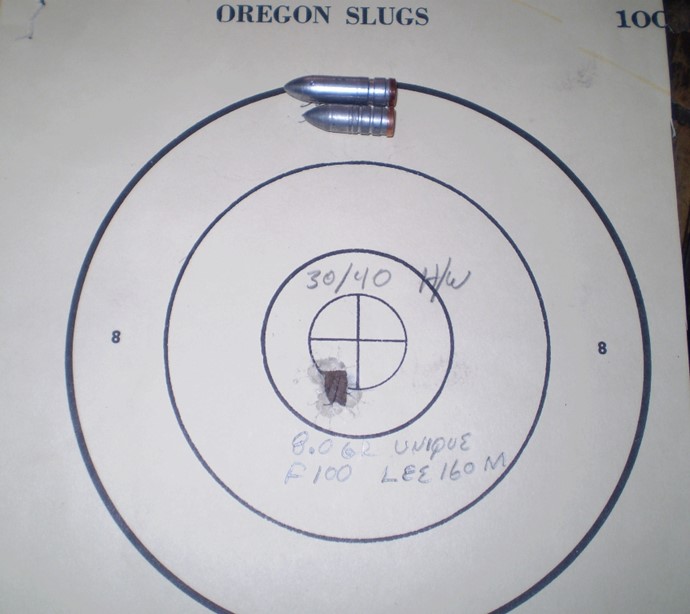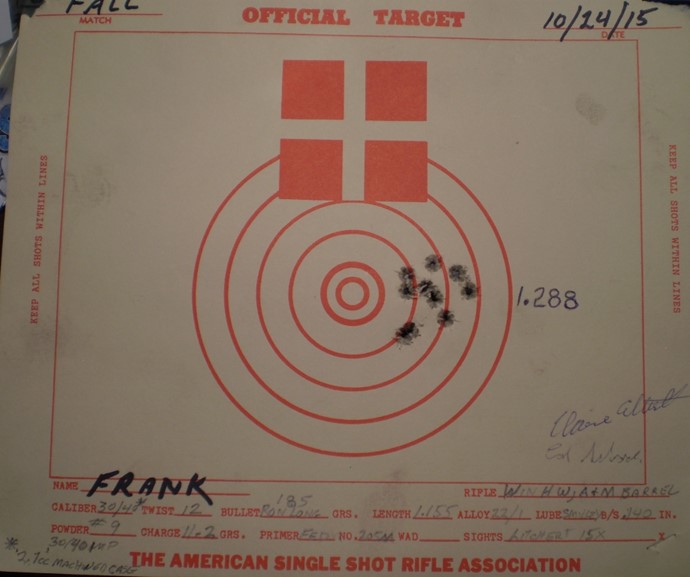With all the discussion lately about BS I'm rather intrigued with breech-seating PBB. That along with the fact that I have a Ruger No.1 that just will not reliably shoot good groups with cast bullets and yet shoots several JB loads at under an inch for 5 shots at 100 yards.
I've two different bullets ready to test. A modified RCBS 25-120-SP with the GC shank milled off the mold to make a PBB and a 97 gr. NEI GC bullet, without a GC seated. I've two loads, both with Unique, 9 and 10 grains. I have a method to breech seat with the use of two cases with brass rods and a tool to seat the case thus seating the bullet to about .060" beyond the case mouth or 2.554" from the face of the breech block. I've 25 cases charged with each charge plugged with floral foam. For a control I will also shoot 2 5 shot groups with fixed ammo, same load combinations.
My hope is that I can first make breech seating of a varmint style production rifle consistent enough to score nines or better on the CBA target. I should also learn if either bullet or load charge weight works. I'll be cleaning the bore with a dry patch between each 5 shot group and shoot one or two fouling shots to be decided before each group. The GC version of the RCBS bullet has shown promise at 50 yards before. The 97 gr bullets were weight sorted by .1grain. With the number I'll be shooting all will be within .3 grain, the RCBS bullet was not weight sorted. The charges were weighed to +/- .1 grain although they were thrown charges. Some throws were outside of the tenth of a grain and were returned to the hopper.
All testing will be 5 shot groups at 100 yards. The results hopefully will be interesting, however the sample size is too small to reach any conclusions. I will at least be able to either rule out these combinations or find something worth further testing. I do know that to be competitive in the PBB class I will need a load combination that places better than 90% in the ten ring with frequent x hits. No I'm not holding my breath.
















